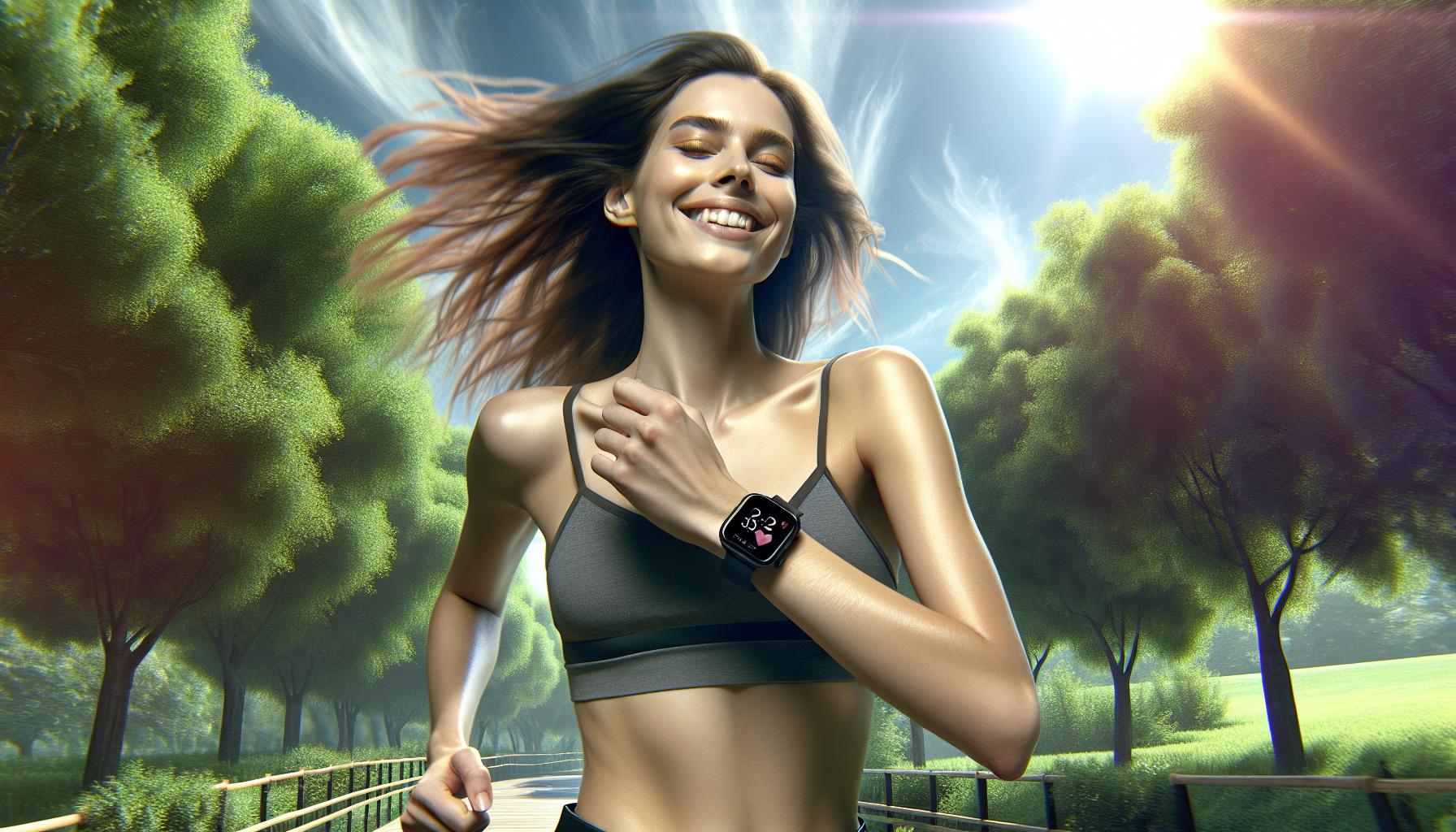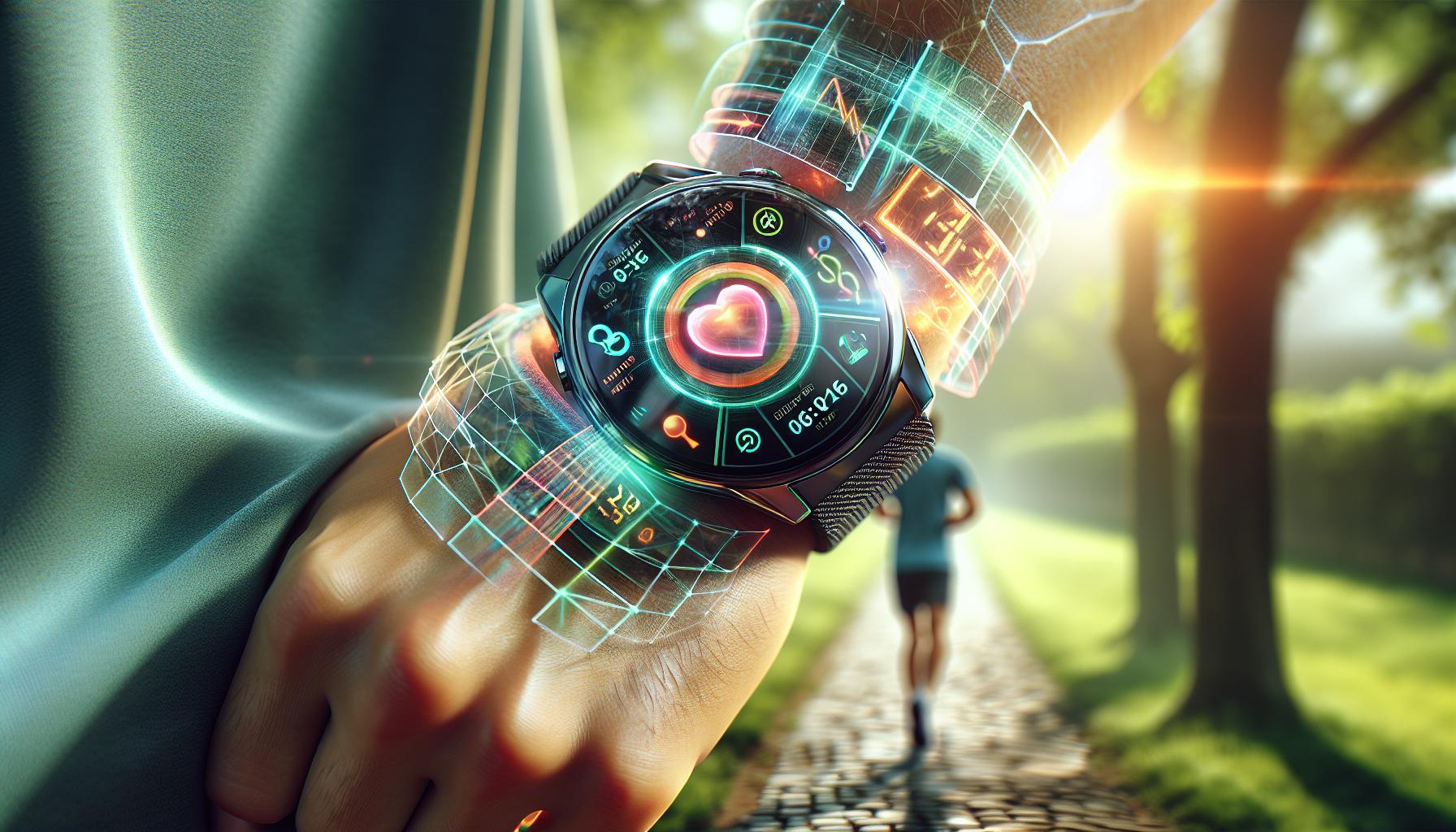In a world where even your toaster might have Wi-Fi, wearable tech gadgets are the shining stars of innovation. These nifty devices don’t just sit on your desk collecting dust; they’re designed to keep you connected, healthy, and maybe even a little cooler than your friends. From smartwatches that track your every move to fitness bands that remind you to move—because who doesn’t need a gentle nudge to get off the couch?—wearable tech is changing the game.
Imagine strutting down the street with a sleek gadget on your wrist, effortlessly monitoring your heart rate while you sip your artisanal coffee. It’s like having a personal assistant, fitness coach, and fashion statement all rolled into one. As technology continues to evolve, these gadgets are becoming more than just a trend; they’re essential tools for a modern lifestyle. Get ready to explore the fascinating world of wearable tech that’s not just smart but downright stylish.
Wearable Tech Gadgets
Wearable tech gadgets represent a dynamic blend of functionality and style. These devices serve various purposes, from fitness tracking to health monitoring. Smartwatches stand out for their ability to deliver notifications, track workouts, and monitor heart rates. Fitness bands focus primarily on health metrics, encouraging users to maintain active lifestyles.
Innovative features characterize many of these gadgets. For instance, some smartwatches offer GPS tracking, while others provide contactless payment options. Health-focused devices now monitor vital signs, such as oxygen levels and sleep patterns. These advancements foster greater awareness of personal health and fitness, promoting proactive lifestyle choices.
As technology evolves, wearables integrate advanced functionalities. Some platforms offer compatibility with third-party applications, enhancing the user experience. Seamless connections to smartphones allow for easier access to information and notifications. These gadgets contribute to a more connected life by enabling users to stay informed and engaged without the need for constant smartphone interaction.
Fashion plays a crucial role in the appeal of wearable tech. Manufacturers create devices with customizable designs, colors, and materials, ensuring wearers can express their style. The trend of merging technology with fashion makes these gadgets appealing not just for their utility but also for their aesthetic value.
Ultimately, wearable tech gadgets are shaping the future of personal connectivity and health management. It’s important to recognize their significance as vital components of modern living. This industry shows no signs of slowing, promising continued innovation and enhanced functionalities for users.
Types Of Wearable Tech Gadgets

Wearable tech gadgets come in various forms, each designed to meet specific needs. Users can choose devices based on functionality, style, and personal preferences.
Fitness Trackers
Fitness trackers monitor physical activity and health metrics effectively. Equipped with sensors, these devices track steps, heart rates, and calories burned. Users appreciate real-time feedback that helps them stay motivated. Many models sync with smartphones, making data analysis simple and accessible. Some advanced trackers offer features like sleep monitoring and guided workouts, catering to fitness enthusiasts. The lightweight design allows wearers to use them daily without discomfort.
Smartwatches
Smartwatches integrate functionality with elegant designs. These devices provide notifications for calls, texts, and social media, making connectivity seamless. Beyond communication, smartwatches support a range of applications, including navigation and fitness tracking. Many brands offer customizable watch faces and bands, allowing users to express their style. Premium models often include advanced health monitoring, such as ECG and blood oxygen measurement. Battery life varies across models, with some lasting multiple days on a single charge.
Smart Glasses
Smart glasses represent a breakthrough in wearable tech with hands-free capabilities. These devices overlay digital information onto the user’s field of vision, enhancing experiences. Features commonly found include navigation prompts, notifications, and augmented reality applications. Users find these glasses particularly useful for activities like biking or running, where traditional screens can be inconvenient. While some models focus on entertainment, others emphasize productivity, integrating with various apps. As the technology evolves, smart glasses continue to offer innovative solutions for everyday tasks.
Benefits Of Wearable Tech Gadgets

Wearable tech gadgets offer numerous advantages that enhance daily life. They improve health and connectivity, making them valuable tools for modern users.
Health Monitoring
Health monitoring represents a primary benefit of wearable tech gadgets. Users track vital signs like heart rates, sleep patterns, and activity levels using devices such as fitness trackers and smartwatches. Many models provide real-time feedback, enabling users to adjust their habits for better health outcomes. Advanced analytics present data trends that help individuals set and meet fitness goals. Furthermore, these gadgets often sync with smartphones, making it easy to share information with healthcare professionals. Insights into personal health foster proactive approaches to wellness management, transforming how users engage with their health.
Enhanced Connectivity
Enhanced connectivity plays a significant role in the popularity of wearable tech gadgets. Smartwatches and other devices allow users to receive notifications for calls, messages, and app alerts without reaching for their phones. This convenience keeps individuals connected while promoting productivity. Many wearables integrate seamlessly with various apps, creating a unified experience for managing tasks and schedules. Users can customize alerts based on their preferences, ensuring they never miss important information. In an increasingly connected world, the ability to stay informed enhances both personal and professional interactions.
Challenges And Considerations

Wearable tech gadgets present unique challenges and considerations for users. These issues span from privacy concerns to battery life limitations, influencing their effectiveness and user acceptance.
Privacy Concerns
User data collection raises significant privacy concerns. Many wearable devices track sensitive personal information, such as health metrics and location data. Ensuring data security is crucial, with risks of unauthorized access affecting user trust. Advocates suggest reviewing privacy policies before using wearable technology. Users often need reassurance regarding how their data is stored and utilized. The potential for data breaches emphasizes the importance of selecting trusted brands. Awareness of privacy implications enhances users’ informed decisions.
Battery Life Issues
Battery life remains a persistent issue for many wearable tech gadgets. Users frequently express frustration with devices requiring daily or frequent charging. Some smartphones last several days, while others struggle to operate beyond a few hours. Manufacturers work to improve battery efficiency through advanced technologies. Optimizing device settings can help extend battery life, allowing users to maximize functionality. Regular updates from manufacturers may also enhance power management. Consideration of battery limitations plays a vital role in selecting the right wearable for individual needs.
Future Trends In Wearable Tech Gadgets
Wearable tech gadgets are evolving rapidly, with several trends shaping their future. Increased health monitoring capabilities will likely become more prevalent, allowing devices to track additional metrics such as blood sugar levels and hydration status. Enhanced sensors may provide users with real-time health insights, fostering proactive health management.
Integration with artificial intelligence stands out as a significant trend. AI algorithms can offer personalized recommendations based on user data, improving fitness routines and sleep patterns. These tailored solutions encourage users to meet their health goals effectively and efficiently.
Interoperability among devices will gain traction. As wearables become compatible with various applications and ecosystems, users will be able to access comprehensive insights from multiple platforms. Seamless data syncing will enhance the overall user experience, connecting health metrics, activity tracking, and personal schedules.
Fashion-forward designs will dominate the market. Manufacturers increasingly focus on aesthetics, creating wearables that function as accessories while retaining advanced capabilities. This emphasis on style ensures that users can express their individuality without sacrificing technology.
Sustainability will emerge as a key consideration in wearable tech development. Manufacturers are exploring eco-friendly materials and energy-efficient technologies, addressing environmental concerns. As more consumers prioritize sustainability, brands that adopt these practices may gain a competitive edge.
Augmented reality features will continue to expand. Smart glasses designed for a range of applications, from navigation to hands-free communication, can redefine user interaction with their environment. The incorporation of AR into daily tasks could enhance productivity and provide new avenues for entertainment.
These trends indicate a dynamic path for wearable tech gadgets, positioning them as essential tools for enhancing health, connectivity, and personal expression.

